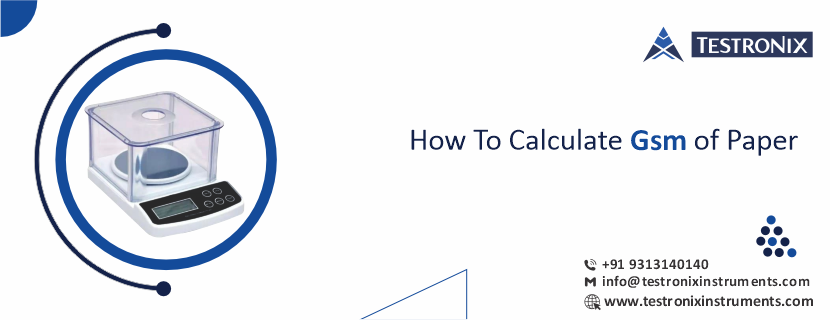Reviewed by Anurag Mishra (Sr. Technical Consultant)

Quality control is a must for any industry, and paper manufacturers are no exception. In order to ensure the quality of their products, paper manufacturers need to measure the weight and thickness of their paper on a regular basis. One of the most common methods used to measure this is known as ‘GSM’ (grams per square meter).
In this blog post, we will look at how to calculate GSM of paper in order to perform quality control in the industry. We will discuss why it is important, what factors should be taken into consideration when measuring GSM, and what other methods can be used for quality control.
The term GSM stands for grams per square meter. It is a unit of measurement used to determine the thickness of paper and paperboard.
In the U.S., we typically use pounds per ream (lb/ream) when referring to the basis weight of paper, but all over the world, GSM is the standard unit of measure. You can read more on the importance of GSM testing in testing the strength of corrugated boxes.
The most common way to measure GSM is with a micrometer, which measures the thickness of a sheet in thousandths of an inch. However, there are other ways to measure GSM as well, like with a caliper or basis weight scale. No matter how you choose to measure it, remember that GSM is a direct indicator of how thick or dense a paper is.
Well, different types of paper have different uses. For example, think about cardstock – it’s much thicker than standard copy paper because it needs to be sturdier for things like business cards or postcards.
On the other hand, tissue paper is very thin and delicate because it’s meant to be used for things like wrapping presents. Now that you know what GSM is and why it matters, let’s talk about how to calculate it.

GSM is the standard unit of measurement for paper weight in the printing industry. It stands for “grams per square meter” and is a direct measure of a paper’s density and thickness.
Paper density directly affects many important printing properties such as printability, runnability, stiffness, and bulk. GSM can therefore be used to predict how a given paper will perform in printing, converting, and end-use applications. For this reason, GSM is an important quality control parameter in the paper industry.
Measuring GSM is simple – all you need is a GSM Cutter.
First, cut a small square (about 15x15cm) from the sheet of paper under test.

Then weigh the square on the scale to determine its mass in grams.
Finally, divide the mass by the area gives you the paper’s density in grams per square meter
Grams per square meter (g/m2) = Mass (g) / Area (m2)
As an example, let’s say we have a piece of paper that weighs 80 grams and has dimensions of 20x30 centimeters. The resulting calculation would be as follows:
Grams per square meter (g/m2) = 80 g / (20 cm x 30 cm) = 53.3 g/m2
In order to measure the GSM (grams per square meter) of paper, you will need a scale that is accurate to within 0.1 g and a square meter ruler. Place the paper on the scale, and weigh it. Divide the weight of the paper by the number of square meters in the sheet to calculate the GSM.

For example, if a sheet of paper weighs 80 g and has an area of 1 m2, then its GSM would be 80 g/m2.
When it comes to paper quality control, the term “GSM” refers to the grams per square meter of the paper. This measurement is important because it tells you the density of the paper and how thick it is. The thicker the paper, the higher the GSM.
There are a few benefits of using a GSM calculator:
1. You can easily compare different types of paper.
2. You can ensure that the paper you're using is of high quality.
3. You can make sure that your printing project will turn out well by choosing a paper with an appropriate GSM for your needs.
In order to calculate the GSM of paper, you will need a few items:
-A scale that can measure in grams
-A calculator
-A GSM Cutter

Once you have gathered your materials, follow these steps:
1. Measure the width of the piece of paper using a ruler or measuring tape. Multiply this number by its length to get the square footage.
2. Place the piece of paper on the scale and weigh it in grams.
3. Divide the weight of the paper in grams by its square footage from step one. The answer is your paper’s GSM!
Knowing how to calculate GSM of paper is extremely important for quality control in the industry.
By following the steps outlined in this article, you can quickly and accurately measure the GSM of any given piece of paper and ensure that it meets your expectations for quality. Use this technique with confidence to make sure that all paper used/manufactured by your company is as per international quality standards.
Contact us today to learn more about the best quality GSM Cutter in India.